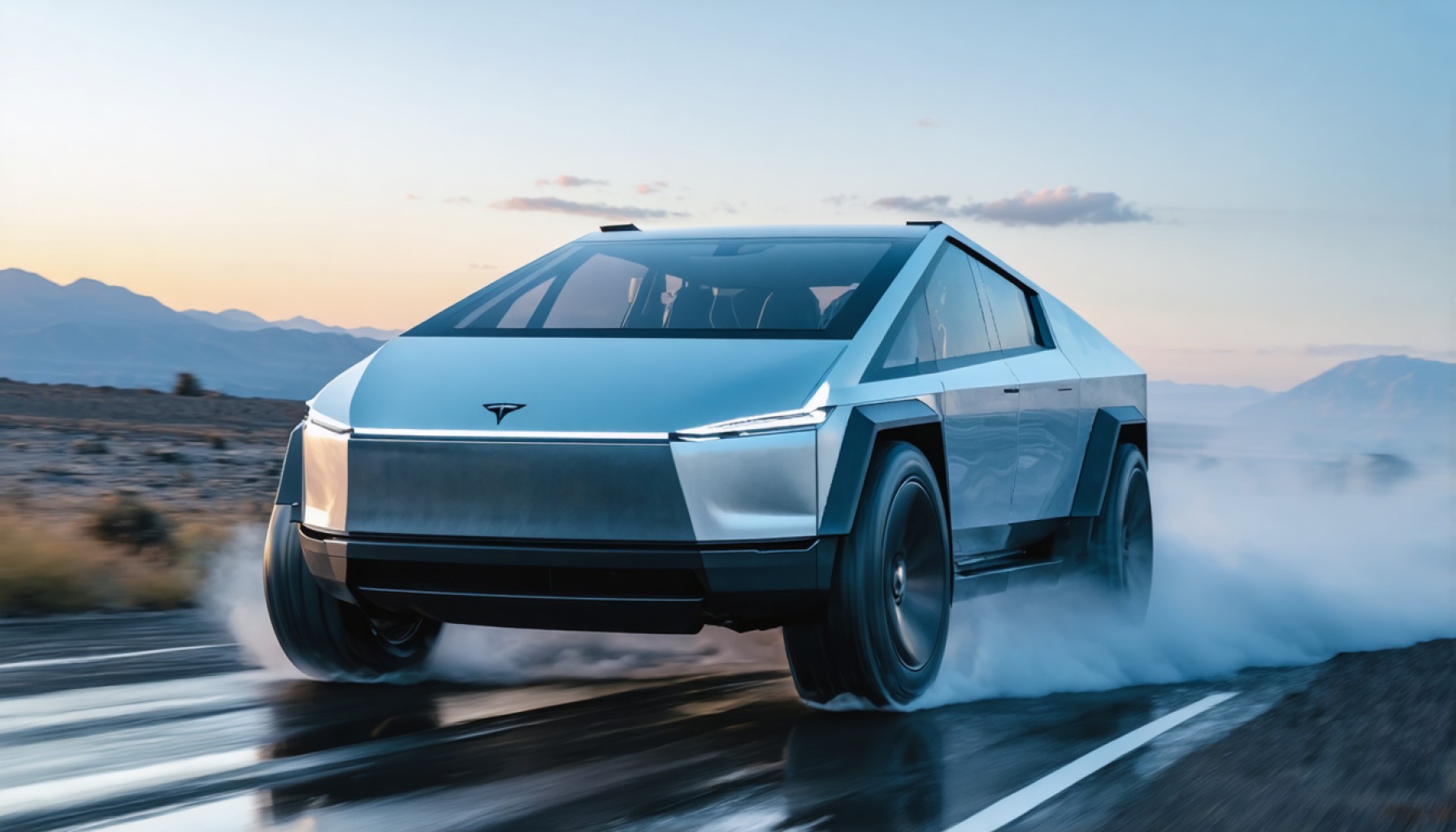- Tesla is facing significant challenges as of 2025, including declining stock prices, reduced vehicle deliveries, and protests concerning Elon Musk’s political ties.
- The company is reportedly not accepting Cybertrucks as trade-ins, with approximately $200 million worth of unsold inventory.
- Discontent among Cybertruck owners is rising, with many seeking recourse under ‘Lemon Law’ protections due to dissatisfaction with their purchases.
- Political dynamics are at play as former President Donald Trump shows support for Musk and Tesla, complicating public perception.
- Sales have seen a 13% decline, reflecting shifting consumer preferences and increased competition in the electric vehicle market.
- The situation underscores the delicate balance required for maintaining brand trust and success in a rapidly changing market landscape.
Tesla, the electric vehicle titan once synonymous with innovation and luxury, is navigating choppy waters as the dawn of 2025 proves unexpectedly turbulent. With a trifecta of escalating challenges — languishing stock prices, diminished vehicle deliveries, and fervent protests linked to Elon Musk’s political entanglements — the company’s latest dilemma is leaving observers puzzled: Tesla is reportedly shying away from accepting its own Cybertrucks as trade-ins.
Visualize rows of silvery, angular vehicles, gleaming under dealership lights, seemingly futuristic yet curiously forlorn. Despite their avant-garde design and much-hyped releases, the Cybertruck’s road has been rocky. Tesla, facing waning demand, appears to be clinging desperately to its inventory, clutching approximately $200 million worth of Cybertrucks that are proving tough to sell. As whispers of these unsold machines echo through the industry, some owners are left stalling in uncertainty, eager to swap their trucks for newer models — a maneuver Tesla currently resists.
The discontent among Cybertruck owners is palpable. Many find themselves on a labyrinthine journey through ‘Lemon Law’ territories, seeking redress for what some perceive as flawed purchases. These consumer protection laws, designed to shield buyers from substandard products, are becoming familiar ground for those who claim their Cybertruck experience has been less than electrifying.
Amidst this backdrop, political theatrics add another layer to the saga. As President Donald Trump shows support for Musk by considering a Tesla purchase, he transforms the White House into a virtual showroom, extolling the brand’s virtues and condemning its detractors. “Harming a great American company” is no small charge, he warns, offering words as charged as the vehicles themselves.
Yet, as market share declines — a notable 13% drop in sales for the first quarter — Tesla’s struggles invite analysis of broader market behaviors. The once seemingly inexhaustible lure of EVs faces scrutiny as consumer preferences shift and newer competitors emerge on the scene, aspiring to dethrone this electric giant.
This saga is a testament to the precarious balance between bold ambition and market readiness. Tesla’s tale unfolds as a reminder: even the most revolutionary disruptors must adeptly steer through uncertainty, maintaining trust and appeal amid fluctuating consumer tides. The stakes for Tesla have never been higher, and the outcome remains a high-speed chase worth watching.
Tesla’s Turbulent Journey: Navigating the Stormy 2025 Market
Industry Challenges and Tesla’s Conundrum
Tesla’s current challenges highlight the evolving landscape of the electric vehicle (EV) market. With a significant dip in stock prices and vehicle deliveries, the situation demands a closer examination of Tesla’s strategy and market dynamics.
Real-World Use Cases and Limitations
1. Cybertruck’s Rocky Road:
– The Cybertruck, once hailed as a revolutionary design, is now facing difficulties in the market. Its polarizing design may have initially attracted attention but has struggled to convert into sustained consumer demand. Tesla appears reluctant to accept them as trade-ins, creating a backlog worth approximately $200 million.
– Consumer Concerns:
– Lemon Laws are increasingly cited by disgruntled owners, suggesting potential quality control issues. These laws provide avenues for those dissatisfied with persistent defects, pointing to possible production or design flaws.
2. Impact of Political Endorsements:
– The political endorsement by figures such as Donald Trump adds complexity. While on one hand, it brings visibility, it might alienate certain consumer segments sensitive to political associations.
Market Forecasts & Industry Trends
– Shifting Consumer Preferences:
– As of early 2025, traditional automakers and new EV entrants like Rivian, Lucid Motors, and others continue to erode Tesla’s market share. These competitors are aggressively expanding and innovating, offering diverse options that cater to varying consumer tastes.
– Sustainability and Innovation:
– Tesla’s sustainability efforts, such as advancing battery technology and expanding solar energy solutions, remain crucial. However, the market is watching how effectively the company navigates supply chain disruptions and ramps up production.
Security and Sustainability Concerns
– Battery Technology:
– Tesla’s advancements in battery tech are pivotal. Continued investment in battery efficiency and recycling can bolster Tesla’s sustainability image, provided these innovations reach practical application promptly.
Pros & Cons Overview
1. Pros:
– Established market leader with a strong brand presence.
– Continual innovation in battery technology and energy solutions.
– Diverse product lineup aiming at various market segments.
2. Cons:
– Declining trust among loyalists due to trade-in resistance and product issues.
– Heightened competition from established and emerging manufacturers.
– Potential negative impact from political entanglements.
Insights & Predictions
– Rebuilding Consumer Trust:
– Tesla must focus on addressing quality issues while rebuilding consumer trust. Implementing more transparent customer service policies could enhance customer satisfaction and retention.
– Strategic Partnerships:
– Leveraging partnerships to improve infrastructure, such as charging networks, can provide a competitive edge, making Tesla vehicles more appealing to prospective buyers.
Actionable Recommendations for Tesla Owners
1. Stay Informed:
– Keep abreast of Tesla’s latest updates, recalls, or trade-in policies that might impact current ownership.
2. Explore EV Alternatives:
– Consider scouting the market for new EV options that might offer competitive features and better trade-in values.
3. Leverage Lemon Laws if Necessary:
– For those facing persistent issues, consulting legal advice on Lemon Law protections can be a crucial step toward resolution.
Readers seeking to learn more about EV trends and innovations can explore Tesla’s official website for the latest announcements and product launches.
